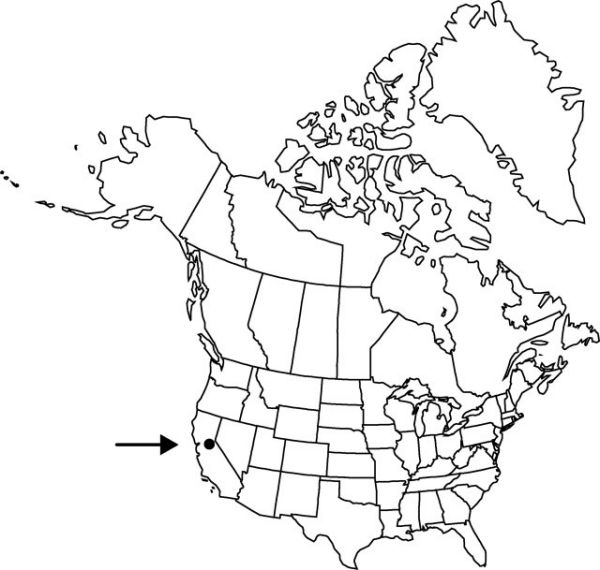Allium tuolumnense
Madroño 36: 128. 1989.
Bulbs usually solitary, not clustered on stout, primary rhizomes, ovoid, 1.3–2 × 1.4–2 cm; outer coats enclosing single bulb, dark reddish brown, membranous, lacking cellular reticulation or cells arranged in only 2–3 rows distal to roots, ± quadrate, without fibers; inner coats light brown, cells obscure, quadrate. Leaves persistent, withering from tip by anthesis, 1, basally sheathing, sheath not extending much above soil surface; blade solid, terete, 30–55 cm × 2–4 mm. Scape persistent, solitary, erect, solid, terete, 25–50 cm × 2–4 mm. Umbel persistent, erect, compact, 20–60-flowered, hemispheric, bulbils unknown; spathe bracts persistent, usually 3, 7–8-veined, ovate, ± equal, apex attenuate. Flowers saucer-shaped, 6–8 mm; tepals spreading from base, white or flushed with pink, broadly ovate, ± equal, becoming papery in fruit, margins entire, apex obtuse to nearly round, not recurved at tip; stamens included; anthers yellow; pollen yellow; ovary crested; processes 6, prominent, ± triangular, margins laciniate; style linear, equaling stamens; stigma capitate, 3-lobed, lobes slender, recurved; pedicel 7–20 mm. Seed coat dull; cells minutely roughened. 2n = 14.
Phenology: Flowering Mar–May.
Habitat: Serpentine soil on open hillsides
Elevation: 400–600 m
Discussion
Of conservation concern.
Allium tuolumnense is known only from the foothills of the central Sierra Nevada, Rawhide Hill and Red Hills.
Selected References
None.

